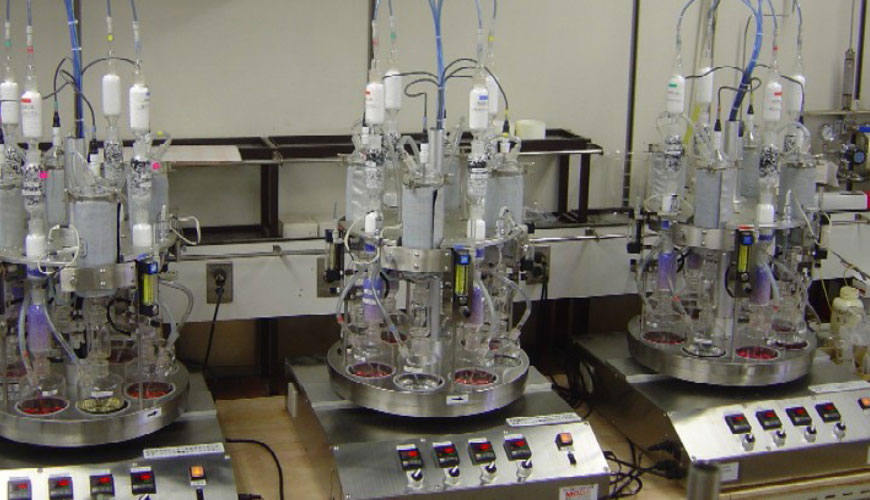

EUROLAB, with its state-of-the-art accredited laboratories and expert team, provides precise and fast testing services within the scope of CEC L-33-A-93 testing. Following the Coordinating Council of Europe's criticism of the well-known biodegradability test (CEC-L-33-A-93) due to the use of hazardous solvents and alternative tests not designed to test lubricants, a technical development group (TDG-L-103) has introduced a replacement was created to create the test method. Basically, it measures the loss of fat and fat-soluble metabolites over 21 days in a nature-like aqueous environment.

The biodegradation of organic material (natural or synthetic hydrocarbon compounds) is actually biochemical oxidation. It is initiated and carried out by the enzymes of microorganisms such as algae and microfungi. Although similar to combustion, this biochemical process is much longer and involves several minor biooxidation steps via long chain alcohols and carboxylic acids, as well as shorter chain acids up to acetic acid and carbon dioxide.
This process provides energy to microorganisms. Inside these "microbugs" is another side reaction that uses long-chain carboxylic acids for the formation of amino acids and proteins. This reaction allows microorganisms to grow in size and number.
When oil or other organic matter is poured into natural water containing ordinary microorganisms, the initial rate of biodegradation is very slow, as all the "insects" present will not accept this material as "food". Those that do will eat and grow in number and size, thus producing a faster rate of biodegradation until this food (the added substrate) is completely consumed.
The resulting degradation/time curve of any organic material usually has three phases: the lag (or adaptation) phase, the degradation (or exponential) phase, and the stationary phase, where new biomass will die if no additional food is added. This type of degradation curve is found when the concentration of added organic material is observed.
However, when the resulting carbon dioxide is measured, the shape will be slightly different due to the side reaction to the proteins and the time-consuming dying process of the biomass produced. This should be considered when comparing the results of degreasing tests with other methods of measuring carbon dioxide production.
EUROLAB assists manufacturers with CEC L-33-A-93 test compliance. Our test experts, with their professional working mission and principles, provide you, our manufacturers and suppliers, the best service and controlled testing process in our laboratories. Thanks to these services, businesses receive more effective, high-performance and quality testing services and provide safe, fast and uninterrupted service to their customers.
To get an appointment, to get more detailed information or to request an evaluation, you can ask us to fill in our form and reach you.